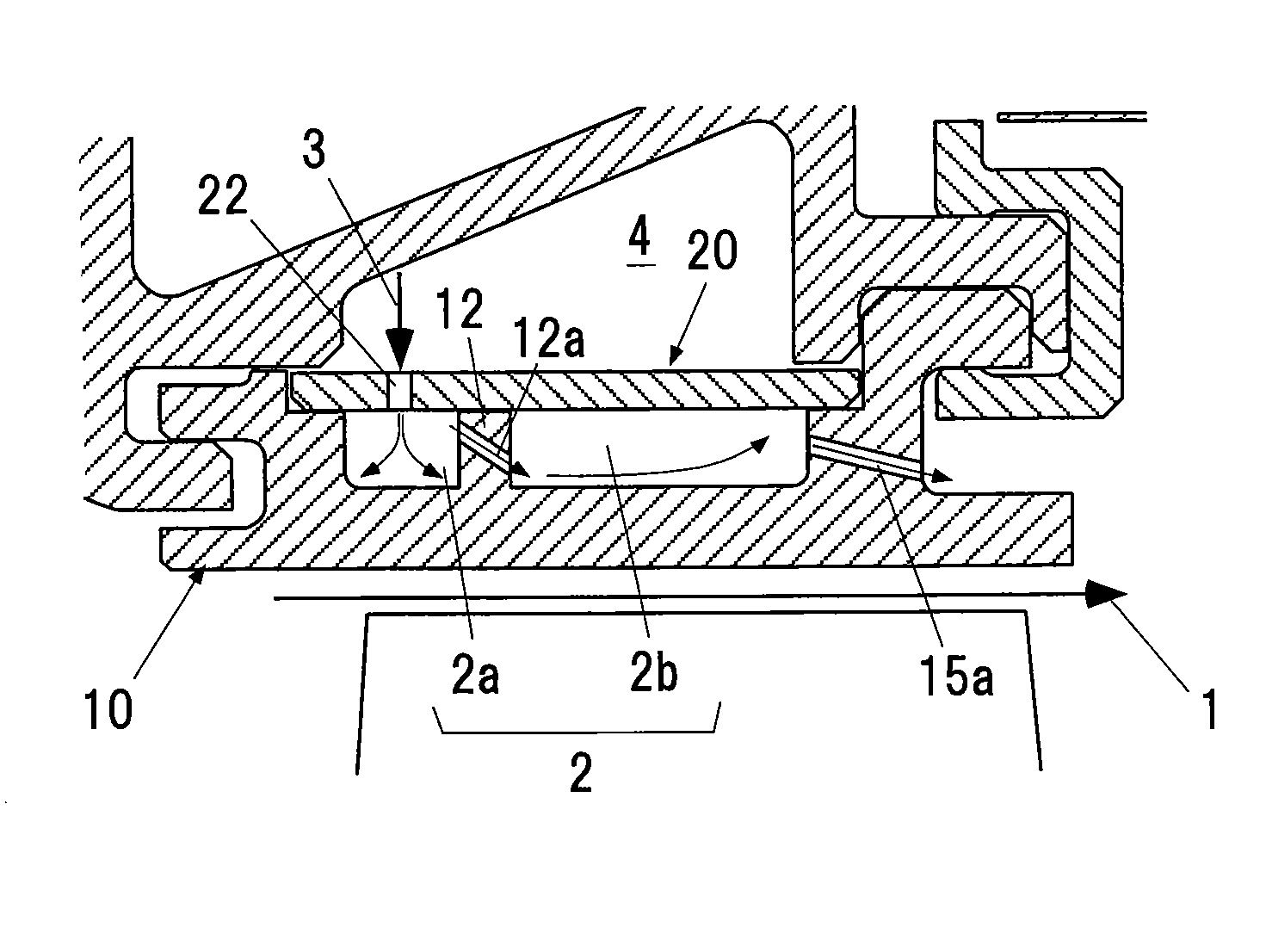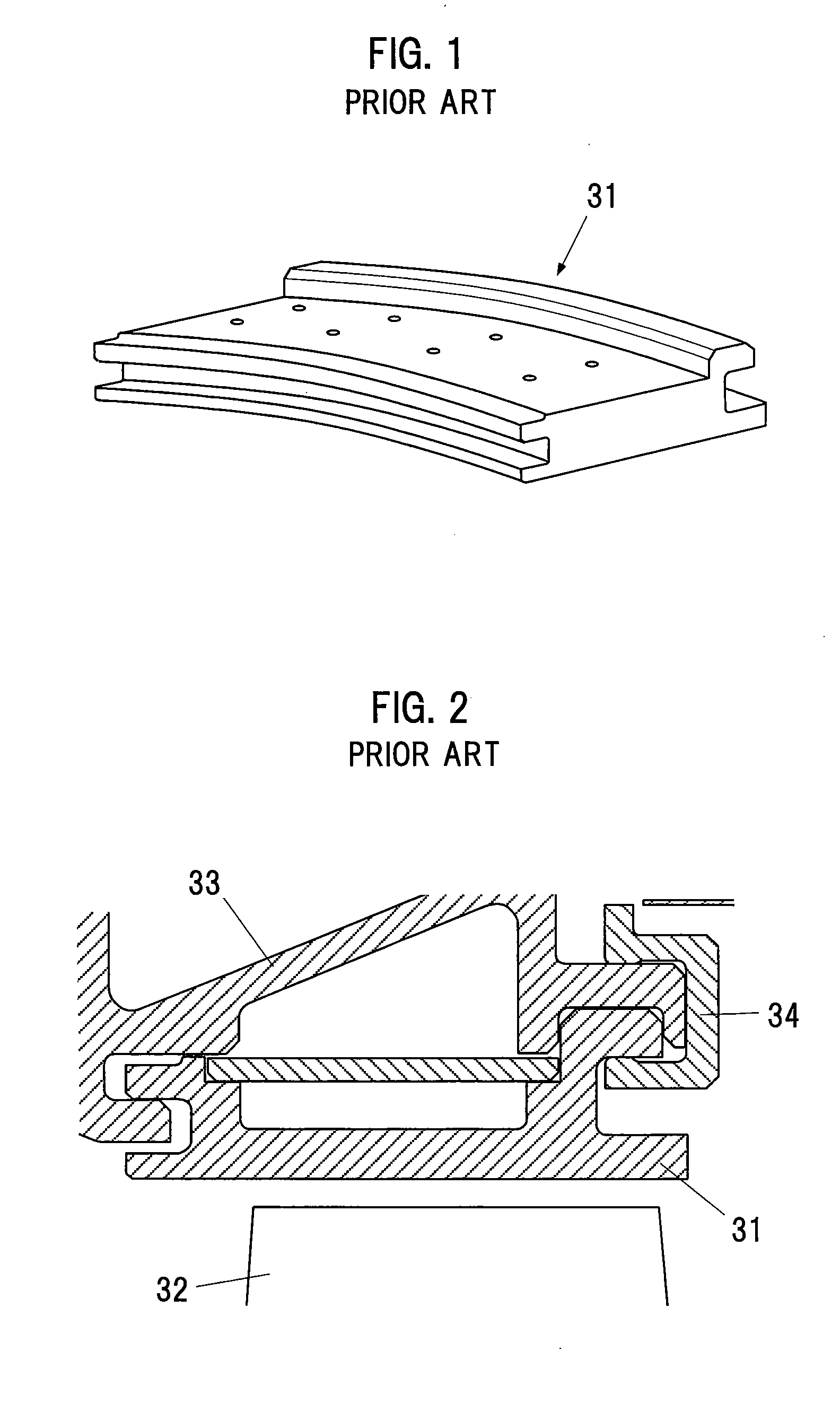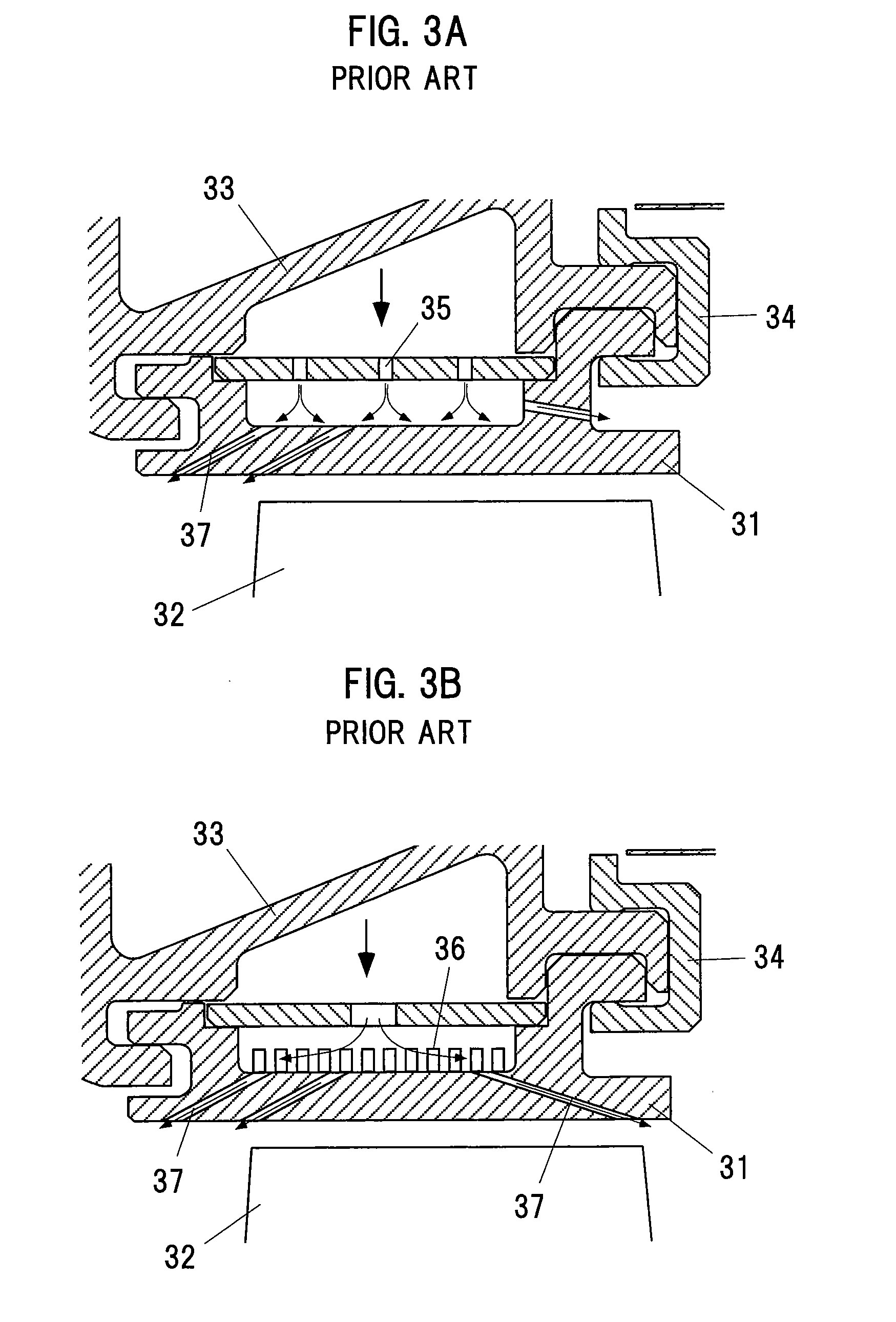Impingement cooled structure
- Summary
- Abstract
- Description
- Claims
- Application Information
AI Technical Summary
Benefits of technology
Problems solved by technology
Method used
Image
Examples
first example
[0083]Test results obtained by comparing the cooling efficiency of the aforementioned structure of the present invention against that of conventional examples are described below.
[0084]As schematically shown in FIG. 14A, a test piece 5 which simulates a turbine shroud is produced. In a state in which hot gas 1 is flowed over one surface and cooling air 3 is flowed over the other surface, a metal surface temperature Tmg of the mainstream side of the test piece 5 is measured, and cooling efficiency η is calculated.
[0085]The cooling efficiency η is defined by the formula of η=(Tg−Tmg) / (Tg−Tc) . . . (1), where Tg is the hot mainstream air temperature and Tc is the cooling air temperature.
[0086]FIG. 14B shows a structure (multiple-stage oblique impingement) of the present invention used in the test, FIG. 14C shows a conventional example 1 (no pin, fin), and FIG. 14D shows a conventional example 2 (with pins). Other conditions are the same for all structures.
[0087]FIG. 15 shows test resul...
second example
[0089]Next, in the structure of the present invention, the influence of a gap at a fin tip is tested.
[0090]FIG. 16 is an illustrative diagram showing a relationship between a gap Δh between a radial outward end of a hole fin 12 and an inner surface of a shroud cover 20, and a height h of the hole fin. In the drawing, the value (Δh / h) obtained by dividing the gap Δh between the fin tip and the plate by the fin height h is set to range from 0 (no gap) to 0.2, and a calculation of a cooling air flow rate and a heat transfer analysis are performed.
[0091]FIG. 17 shows the analysis results. The horizontal axis represents the axial length and the vertical axis represents the metal temperature of a gas passing surface (metal surface temperature on the mainstream side). Lines in the drawing represent results for Δh / h ranging from 0 to 0.2.
[0092]From the graph, it is found that the temperature of the turbine shroud stands below an allowable value when Δh / h stands at or below about 0.2.
third example
[0093]Next, in the structure of the present invention, the influence of the angle of a second impingement cooling hole 12a is tested.
[0094]FIG. 18 is an illustrative diagram showing a relationship between the angle θ of the second impingement cooling hole 12a and the height e of an impingement. In the drawing, a cooling performance test is conducted under the following conditions: the angle θ=30° and 45°, and h / L=0.13 and 0.26, where h is the height of an impingement, and L is cooling chamber length.
[0095]FIG. 19 shows the test results. The horizontal axis represents the cooling air flow rate, and the vertical axis represents the average cooling efficiency. Solid circles and open circles in the graph represent the test results for 30° and 45°, respectively.
[0096]From the graph, it is found that even if the angle is changed, the cooling efficiency is not much affected thereby.
PUM
 Login to View More
Login to View More Abstract
Description
Claims
Application Information
 Login to View More
Login to View More - R&D
- Intellectual Property
- Life Sciences
- Materials
- Tech Scout
- Unparalleled Data Quality
- Higher Quality Content
- 60% Fewer Hallucinations
Browse by: Latest US Patents, China's latest patents, Technical Efficacy Thesaurus, Application Domain, Technology Topic, Popular Technical Reports.
© 2025 PatSnap. All rights reserved.Legal|Privacy policy|Modern Slavery Act Transparency Statement|Sitemap|About US| Contact US: help@patsnap.com



